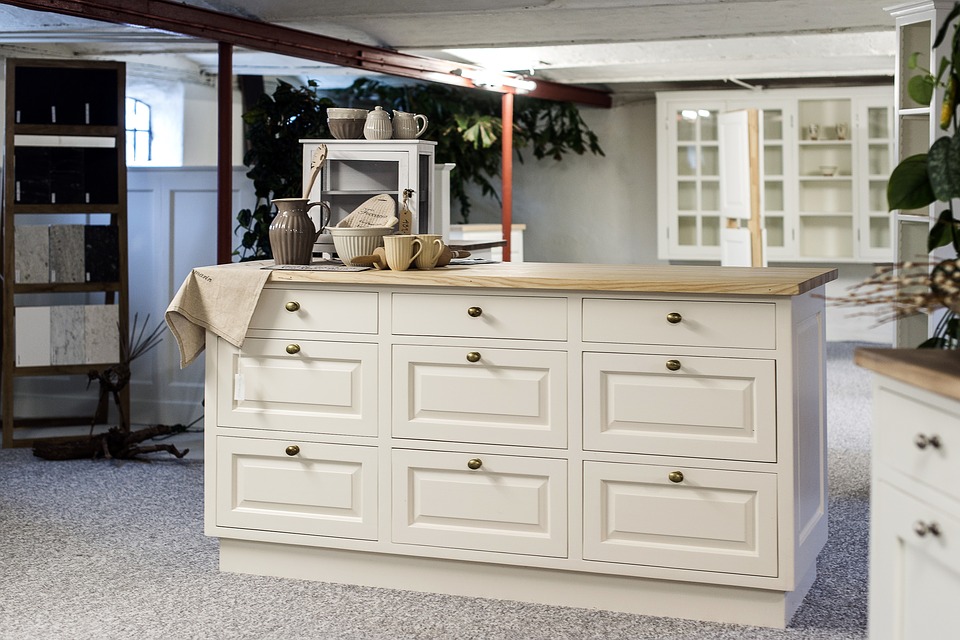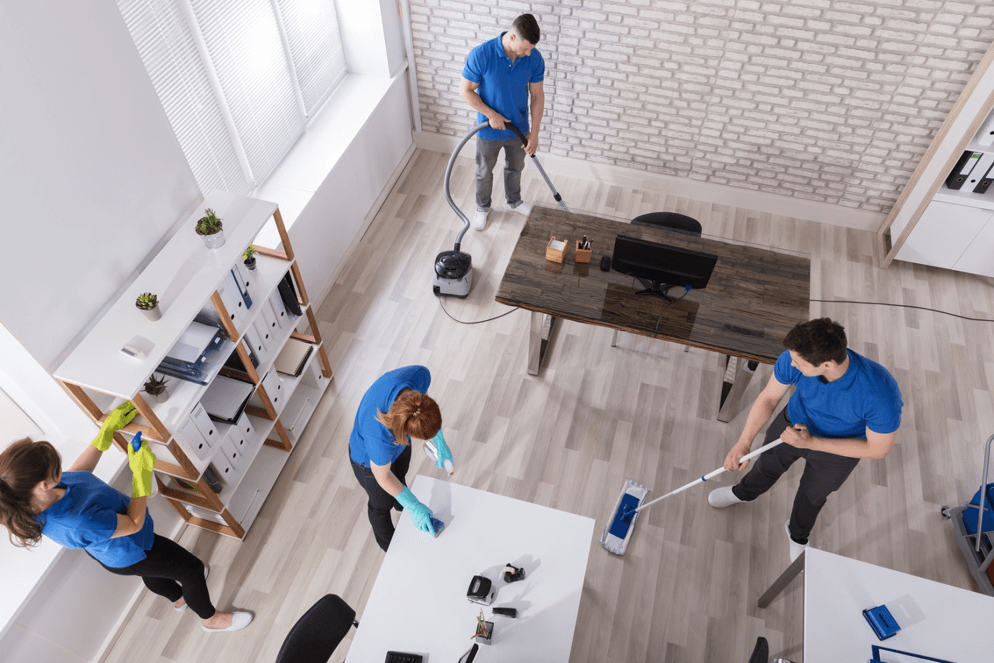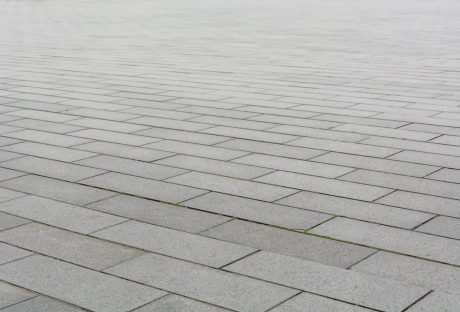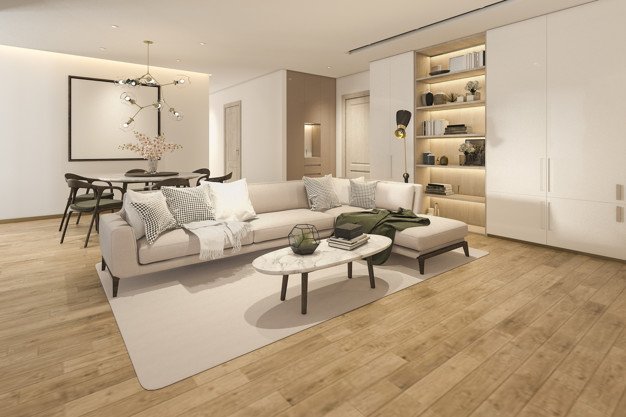Among the defining factors of your kitchen’s overall look are its cabinets. After all, in kitchen design, the cabinetry often serves as an anchor, the thing that ties every other design elements together to create a seamless look. As such, beyond style, what’s more, important is to choose the right materials for your kitchen cabinet.
Reliable flat pack kitchen contractors can offer you a variety of kitchen cabinet material choices. Moreover, they can also recommend suitable materials and even combinations of materials to suit both style and practical function. Here’s a quick look into the most common materials used by cabinet makers.
How to Choose the Right Kitchen Cabinet Materials for Your Project:
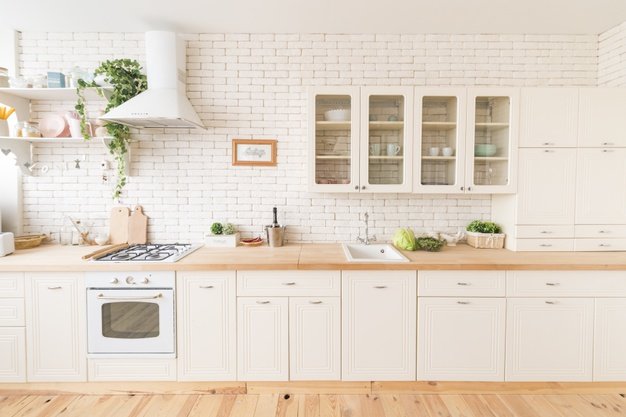
Hardwood Cabinets
You could say that hardwood kitchen cabinets are the grandfather of all kitchen cabinets. One of the main draws of using hardwood is that, because it’s a natural material that varies in grain from piece to piece, every kitchen cabinet will be equally unique. There are no two trees that are exactly alike, which means that even cabinets made from the same kind of hardwood will have subtle differences. Another benefit of hardwood is that it’s not only durable. It’s also easy to repair. Even inexperienced carpenters can DIY procedures like sanding, staining, or refinishing. Finally, there’s a wealth of options to choose from. Popular hardwood species include jarrah, marri, birch, cherry, maple, and oak.
When it comes to downsides, however, the most common disadvantage people cite is that hardwoods tend to be heavy. As such, if you want pure hardwood cabinets, you have to make sure that there’s a sturdy enough structure to support them. Another drawback of hardwood kitchen cabinets is that they’re expensive, especially if you want fully customized designs. Some Perth kitchen cabinet makers will suggest combining hardwoods with other materials to help drive down the cost.
Are hardwood cabinets right for your kitchen? If budget isn’t an issue and you want beautiful, long-lasting cabinets, hardwood is the best choice. Hardwood is also great for busy kitchens since it’s a heavy-duty material.
Medium-Density Fibreboard Cabinets
Medium-density fibreboard or MDF has gained popularity in the world of cabinetry, especially since IKEA has long been using it for their own kitchen cabinets and other furniture. The material is a composite of recycled wood fibers and wax, bound together by resin. The boards are made through high-pressure CNC milling, resulting in strong and dense material.
Indeed, MDF is a versatile substrate, able to be painted, veneered, lacquered, laminated, or treated with almost any process or substance. MDF is also proven to be resistant to cracking and is considerably smoother than plywood.
The one downside of MDF is that it needs to be properly sealed. Otherwise, it has a tendency to warp. You can use carpenter’s glue for this purpose, especially if you’re going to paint over the material. For some waterproofing, you can use the wood sealant, varnish, or a coat of moisture-resistant paint.
Are MDF cabinets right for your kitchen? Those looking for more affordable yet high-quality alternatives can turn to MDF. Contemporary kitchens and those who love to DIY and customize will also benefit from MDF cabinets.
Plywood Cabinets
Plywood is made from multiple thin layers or plies of wood that are bound together by a combination of glue, heat, and pressure. The adjacent layers are rotated so that the grains are facing alternate directions. This technique, called cross-graining, enhances the material’s strength in all directions. Moreover, it helps prevent shrinkage and expansion, minimizes splitting of the layers (when nailed at the edges), and reduces warping.
Many cabinet makers consider plywood excellent material. Apart from the benefits mentioned above, plywood is also moisture-resistant, light but sturdy, flexible, and easy to install. In case the cabinets get damaged, plywood is also quite easy to repair through DIY methods. Finally, plywood is also much less expensive compared to even the most affordable hardwood.
Do remember that making plywood cabinets is all about choosing the right thickness. You’d want to use a thicker material on drawer bottoms, for example, or you risk it cracking or splitting if you put heavier items in it. Your kitchen cabinet maker likely already knows this, of course, but just make sure that you tell them what you need so they use the correct types of material. Also, ask where they source their plywood. Note that some lower-quality products may have gaps between the individual plies.
Are our plywood cabinets right for your kitchen? Plywood is ideal if you’re working with a stricter budget but don’t want to compromise on quality. You may also want to consider plywood if you’re making your own cabinets since it’s an easy material to work with.
Particleboard Cabinets
Particleboard is often compared to plywood. Also called low-density fibreboard (LDF) or chipboard, particleboard is engineered from various recycled wood products like wood chips, sawdust, and wood shavings. These materials are glued together, then pressed and extruded to create sheets. As a final touch, particleboard is laminated or given a wood veneer for a better-looking appearance (as plain particleboard can be, well, plain-looking).
The primary advantage of using particleboard for kitchen cabinets is that because it’s made from scrap materials, it’s very cheap. It’s also very lightweight. However, particleboard also tends to be on the lower end of the durability scale, especially when subjected to tension. Moreover, the material is prone to moisture damage and is not built to withstand sagging. Nonetheless, you can still find high-quality particleboards that are quite sturdy. Ask your kitchen cabinet maker to help you find the best ones.
Are particleboard cabinets right for your kitchen? If your kitchen doesn’t see too much action and you don’t have any heavy equipment, particleboard cabinets and shelves will more than suffice.
Stainless Steel Cabinets
Finally, there’s stainless steel. Not many households opt for this material for kitchen cabinets. In fact, these are often seen only in industrial, professional-level kitchens. Nonetheless, stainless steel is an ideal material in the kitchen, both for cabinets and general usages like shelving and racks. It’s durable, doesn’t expand or contract, and resistant to most kinds of damage. Stainless steel can be difficult to clean, however, but it’s very hardy so it can withstand a lot of scrubbing and even harsh chemicals. This makes sterilizing a breeze. Nonetheless, you should also note that stainless steel cabinets tend to be expensive, sometimes costing even more than hardwood.
Are stainless cabinets right for your kitchen? Do you consider yourself a chef in your own right? Do you often cook, not just for yourself but also for your family and friends? If you do, then stainless steel kitchen cabinets are perfect for you.
Many of these materials, except perhaps for stainless steel, can be customized and combined with plenty of other materials, so the style isn’t the biggest issue. Therefore, in the end, choosing the right kitchen cabinet materials all boils down to two primary considerations: your budget and how often you’re going to use your kitchen. When you focus on these two, the decision will become simpler.
Contact kitchens now for quality flat pack kitchens
Read Also:













